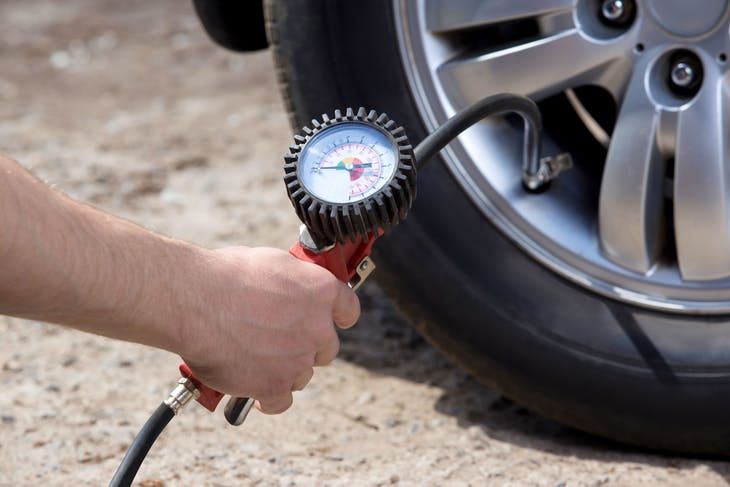by Cassandra Tribe
Maintaining the correct air pressure in your car's tires not only increases your safety on the road, but improves the car's gas mileage. The correct air pressure for a tire is written on the side of the tire and listed as a number of pounds per square inch (PSI). Once you have located that number, you can take your car to check the tire pressure at a gas station.
Go to a gas station that has an air machine for filling tires. They are usually located outside and look like small boxes with long, black hoses attached to them (sometimes they are marked 'Air'). Pull your car up to the machine so the machine is centered on your car. This way, the air hose is sure to reach all of your tires.
Pick one tire to start with and locate the PSI label on the tire. It will be written on the side of the tire: Find the numbers or letters of the brand of tire and at the end of that label, typically given in a parentheses. For example, the side of a tire may read: PR300345 All Weather (30-45 PSI). This tire requires between 30-45 PSI to operate safely.
Remove the tire air stem cap. The air stem is a black stem that will be protruding through your rim, with a screw-on cap.
Pull the air hose over to the tire. Most air hoses have a trigger assembly on the end. The tip will fit over the end of the air stem. Press the tip down firmly on the stem for two seconds, and the built in pressure gauge on the top of the trigger assembly will extend a pressure reading bar. Pull the tip of the air hose off the air stem. If the air hose does not have a trigger assembly, purchase a tire gauge from the gas station or from an auto supply store. Press the tip of the gauge over the stem and the pressure bar will extend out the back. Remove the gauge.
Read the pressure bar to see the current PSI level in your tire. The pressure bar is marked with a series of lines and numbers.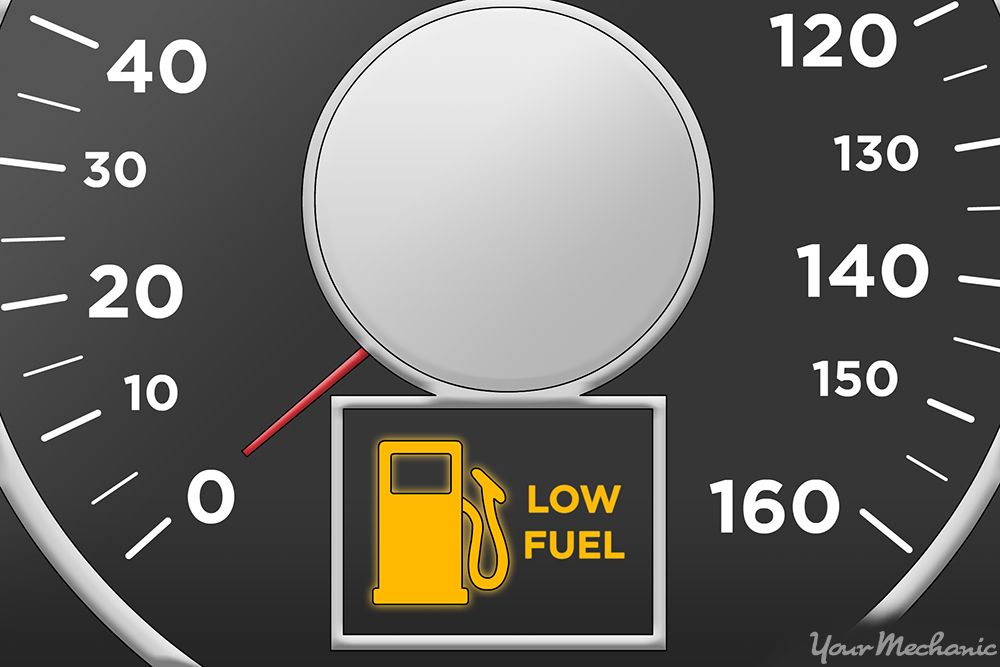 Most pressure bars use lines to indicate two pounds of pressure in-between whole numbers. For example, there will be four lines at the very tip of the bar and then the number 10; then four more lines and the number 20, etc. The point where the pressure bar has stopped extending from the case indicates the number you should read to determine the PSI level in your tire.
Most pressure bars use lines to indicate two pounds of pressure in-between whole numbers. For example, there will be four lines at the very tip of the bar and then the number 10; then four more lines and the number 20, etc. The point where the pressure bar has stopped extending from the case indicates the number you should read to determine the PSI level in your tire.
Add air, if necessary, by pressing the tip of the air hose down on the air stem and holding the trigger in. Wait a few moments, release the trigger and remove the air hose. Check the tire pressure again. Make sure you have pushed the pressure bar back in before beginning the process, or your reading will not be accurate. Repeat until you have the correct PSI level in your tire.
References
Tips
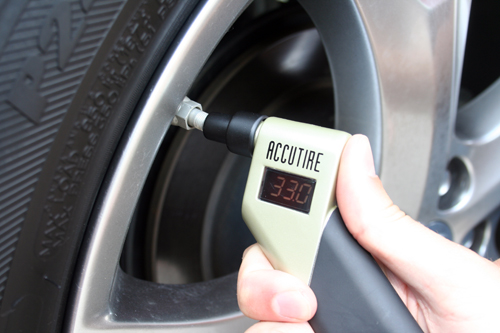 All cars made after 1968 are required to have a placard that lists the details of the vehicle, including the PSI range for the tires.
All cars made after 1968 are required to have a placard that lists the details of the vehicle, including the PSI range for the tires. Things You'll Need
Warnings
Writer Bio
Cassandra Tribe has worked in the construction field for over 17 years and has experience in a variety of mechanical, scientific, automotive and mathematical forms. She has been writing and editing for over 10 years. Her areas of interest include culture and society, automotive, computers, business, the Internet, science and structural engineering and implementation.
Checking the pressure of your tires at a service station is easy, affordable, and convenient.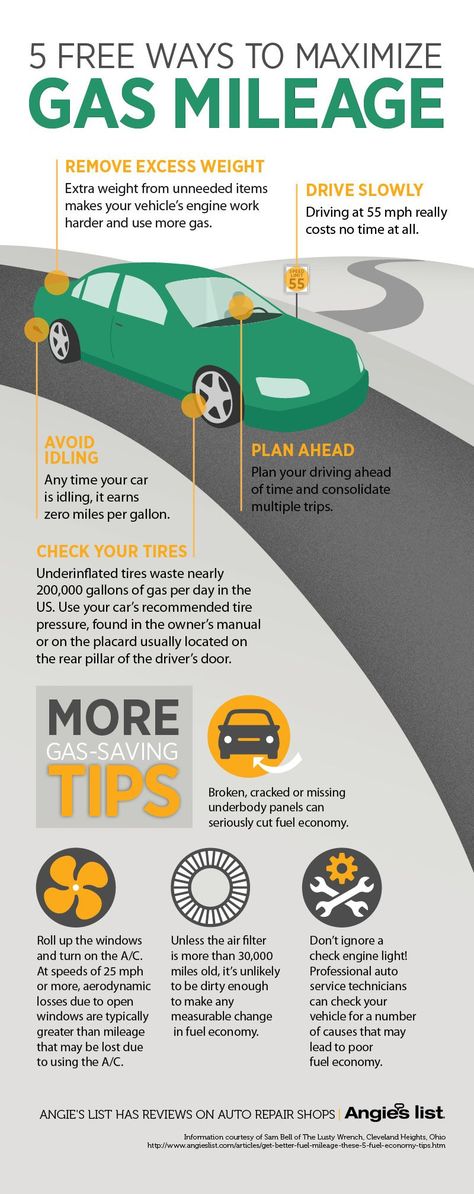 It can be the best way to keep up with one of the most important aspects of the maintenance of your vehicle.
It can be the best way to keep up with one of the most important aspects of the maintenance of your vehicle.
It is very important to maintain your vehicle frequently, and make sure that everything is up to date. Tire pressure check-ups are among the most important routine operations you should consider.
The right pressure can enhance the safety of your journey, and in most cases it can improve the performance of your vehicle as a whole.
If the pressure level is set properly, your car tires will wear out more evenly. This means that their performance will be more consistent throughout the lifespan of the tires, and it will dramatically improve the fuel efficiency of your car. The experience of driving a car with better tires is absolutely mind-blowing, especially if you have been driving with properly pressurized tires for quite some time now.
There are many reasons why you should be aware of the current state of your tires. It is very unsafe to drive with de-pressurized tires.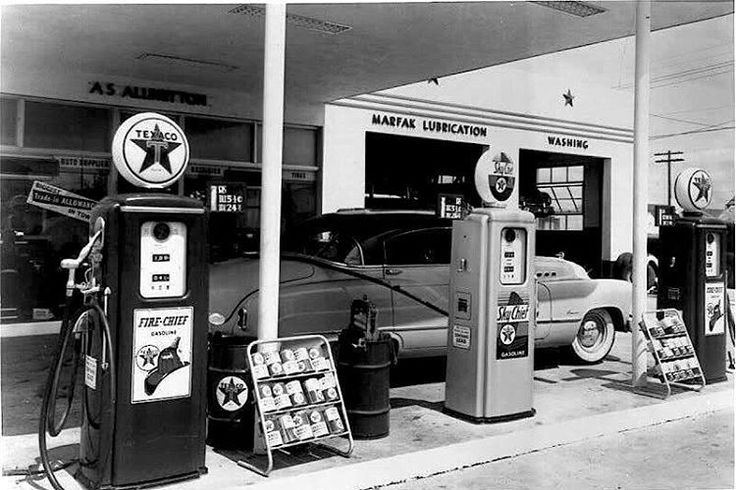 So, it is highly recommended to check up whenever possible. In most cases, it’s advisable to check the pressure of your tires at least once every two months if not more, depending on how often you use your vehicle. There are many ways to check the pressure of your tires. You could go to your trusted car professional or hit any repair shop, and even some dealerships might be able to offer their services.
So, it is highly recommended to check up whenever possible. In most cases, it’s advisable to check the pressure of your tires at least once every two months if not more, depending on how often you use your vehicle. There are many ways to check the pressure of your tires. You could go to your trusted car professional or hit any repair shop, and even some dealerships might be able to offer their services.
On the other hand, some of the most popular places where you can check the pressure of your tires are definitely gas stations and service stations. Whenever you check the pressure of your tires at a gas station, you’re most likely to find special gauges, Which are available for this exact purpose. At first, checking your tires with such gauges might seem intimidating. However, they are easier to use than you might think.
Most gas stations will even have detailed instructions that will walk you through each step of the process. In addition to that, you can always ask a service staff member to help you out check your tire with the gauges if you are really confused and don’t know what to do.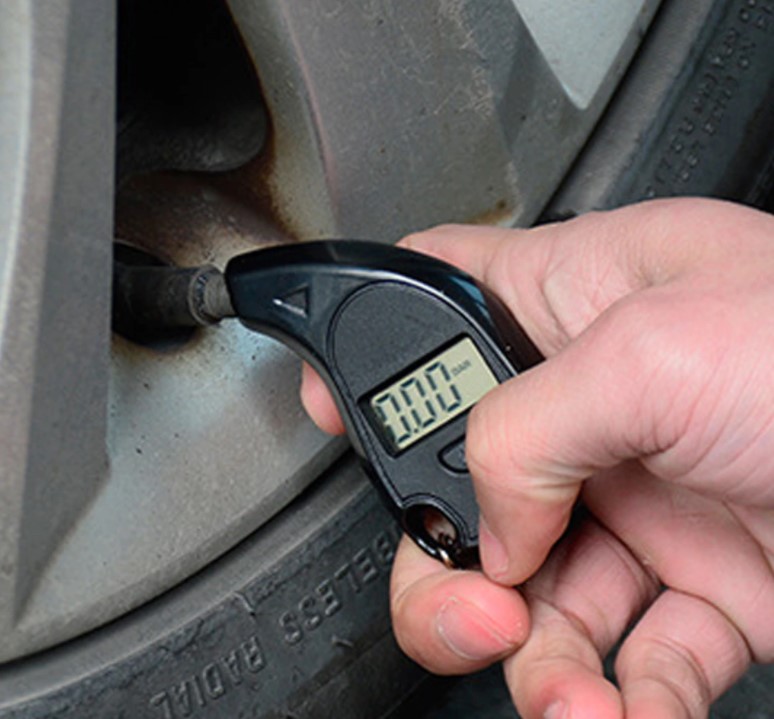
Having said that, it is worth noting that this is a very simple operation that can be performed by pretty much any driver, including beginners.
All you really need is a tire pressure gauge and an air compressor (provided by the gas station) to make adjustments. It might be useful to track the measurements of your pressure over time, you can bring a pen and a notepad along for the ride. If you’re the tech-driven type, you can simply save your measurements on your phone and make it a lot easier.
There are tons of different types of pressure gauges available at gas stations. Some of them are innovative and modern, featuring digital metering and displays. However, most stations still use old-school gauges.
These are still quite relatable and it really is all all about your personal preferences. You can find air compressors at most gas stations as well, and the great thing is that they are super affordable. Using them cost anywhere from a few cents to a dollar, depending on where you are.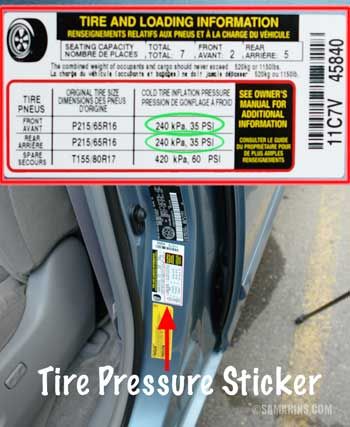
If you're like me, you might consider buying your own personal tire pressure gauge. This is a great tool to have in your vehicle and because it's so small, you can store it pretty much anywhere. Click here to view our line of tire gauges!
In order to make sure that you get the most accurate readings, try to make sure that your tires aren’t really hot. If possible, you should also have the manufacturer’s recommended pressure level (PSI) at hand for reference. If you don’t have paper documents handy, you might be able to easily google this information and look it up from your computer. Of course, the vast majority of tires available on the market (if not all of them) actually would display a PSI indication, showing the max pressure recommended.
There are many people who prefer to slightly under-pressurize their cars in relation to the recommended maximum levels. This is because the air might expand as you drive and the tires heat up, therefore potentially increasing the pressure of the tires. This is something that’s particularly common throughout summertime, and in particularly hot areas.
This is something that’s particularly common throughout summertime, and in particularly hot areas.
You are likely going to come across the term PSI, as mentioned earlier on. This refers to “Pounds Per Square Inch,” and it is a standard pressure measurement, that’s really important to consider. Now, what do we mean by “cold tires?” This is a term that indicates the state of tires after the vehicle has not been in use for at least 3 or 4 hours. In addition to that, you can still consider your tires cold if you have been driving your car for less than one mile, and you didn’t travel so fast. This is really good news if you actually have a service station near your home. It means that you can easily take the quick drive to the gas station and check the tires right away, without actually waiting.
As mentioned earlier, you should definitely check the pressure frequently, at least once every couple of months for optimal results.
If the pressure of your tire appears to be too low after checking, you might be able to add some air at the gas station. It usually will only set you back some spare change, and a few quarters should do the trick! Using the air dispenser is very easy, and it is usually free at most stations in the states. Having said that, it is definitely a good investment even if you have to pay for it.
It usually will only set you back some spare change, and a few quarters should do the trick! Using the air dispenser is very easy, and it is usually free at most stations in the states. Having said that, it is definitely a good investment even if you have to pay for it.
While it is appropriate to add some air to correct low pressure, you also need to pay attention to the other side of the spectrum. Especially during the hot season, you might find that your tires might actually be over-pressurized. How does it happen? As you drive around, heat will begin to build up in the tire. As you might know, hotter air can lead the tires to expand and overinflated.
When checking tire pressure, you should care about the accuracy of your measurement. The last thing you want to do is to actually over-inflate the tire, and come out with an incorrect balance. If you follow these suggestions you are certainly going to be able to avoid the hassle of a flat tire and improve the longevity of your tires, not to mention the performance of your vehicle.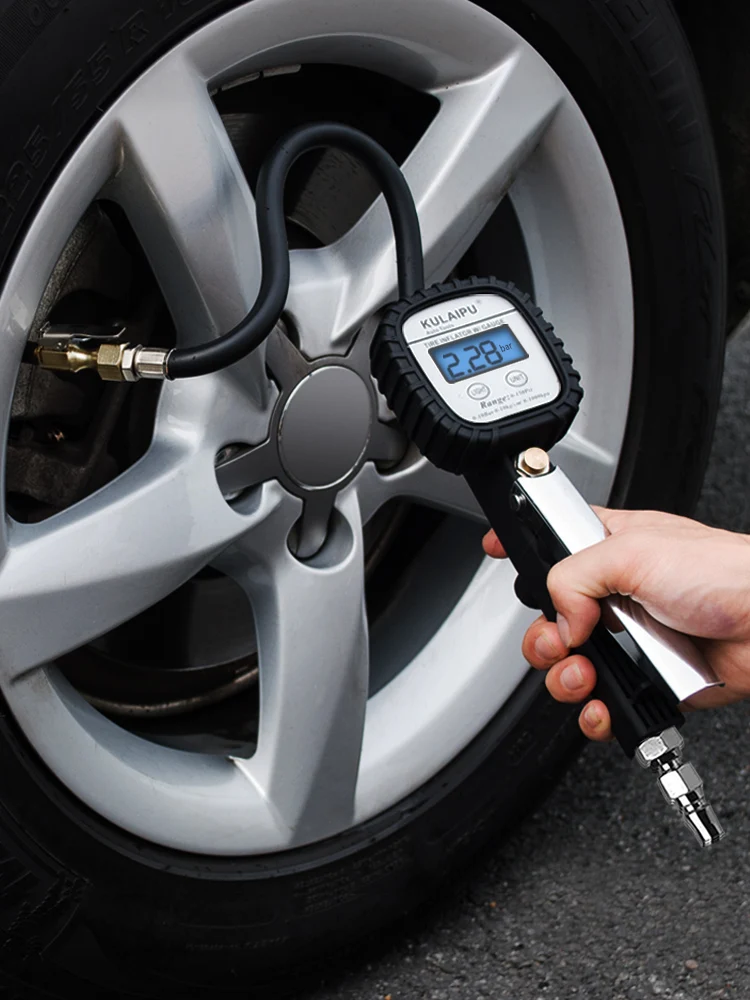
In conclusion, keep in mind that checking the pressure of your tires is very important. You should never underestimate the safety of your self and your family, especially if you are getting ready for long car trips or if you use your vehicle on a day-to-day basis. In fact, the more often you use your car, the more often you should consider checking the pressure of your tires to make sure that you do not run into any unexpected issues.
Thank you for taking your time to read our article, as mentioned above we sell a line of high quality Tire Pressure Gauges designed for the on-the-go experience. Much better than having to stop at a Gas Station for a quick PSI reading. Get your own gauge today by clicking here.
Back to blog Tire wear, vehicle handling, and therefore driver safety are directly dependent on tire pressure. Therefore, it will not be superfluous to recall what it should be like and how to check tire pressure.
The main units for measuring tire pressure are atmospheres, at least that's what drivers and mechanics themselves are used to calling them. 1 atmosphere is approximately equal to 1 bar and 10,000 Pascals. But it would be too easy if pascals, bars and atmosphere were the only things that measure tire pressure. Today, more and more often at service points you can find pressure gauges with the PSI scale - this is a foreign pressure scale, which stands for pounds per square inch.
These mysterious PSIs are just different from our atmospheres, for example, 2.0 PSI (or 20 on some scales) in terms of atmospheres or bars will give only 1.4. It turns out that one PSI is equal to 0.7 bar . So if you pump the wheels at 2.2 atmospheres, then you need to divide 2.2 by 0.7, and you will get the right amount of PSI, namely 3.2.
How can I check the tire pressure if there is no gas station or service station nearby? You can evaluate this parameter without a pressure gauge, focusing on the appearance of the tread after a long trip on a dry and relatively clean surface. These conditions are rare, but still - if both sides of the tread are clearly darker than the center, this means that the pressure is too low.
The central part of the tread is clearly darker than the edge, which means that the pressure is too high.
However, only a special pressure gauge, which is equipped with all vulcanization stations, service stations and gas stations, will show you true indicators. To measure the pressure, you just need to insert the end of the hose into the nipple. However, before can read the tire pressure, let the car cool down after driving.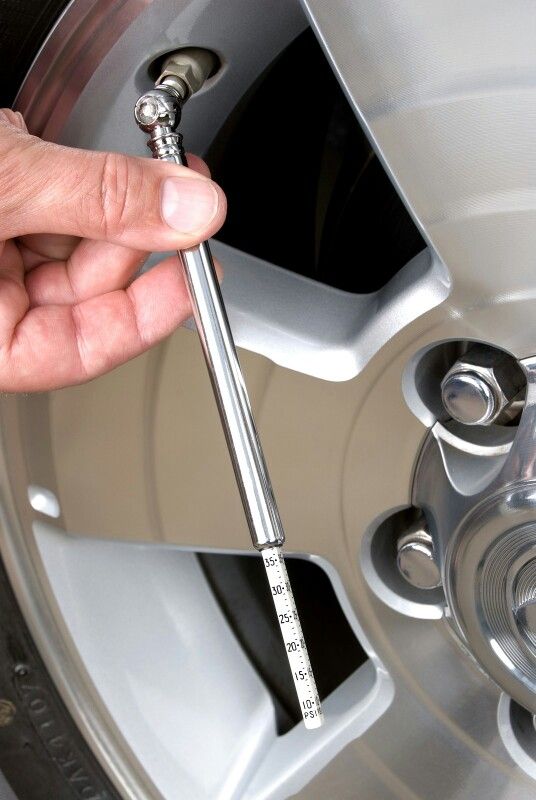 For example, if you stop at a gas station and decide to pump up your tires, wait at least 15 minutes before doing so. Tire pressure should be checked at least once every two weeks or after every 2,000 km.
For example, if you stop at a gas station and decide to pump up your tires, wait at least 15 minutes before doing so. Tire pressure should be checked at least once every two weeks or after every 2,000 km.
Many drivers buy a pressure gauge for "home" use, so as not to look at the most inopportune moment how to check tire pressure. And this is a very correct step - sadly, but at different service stations and gas stations, pressure gauges can show different data . Therefore, it is worth checking the pressure with your own pressure gauge every time after pumping the wheels, and being guided by your own driving sensations, determine the ideal pressure value. For these reasons, it is recommended to pump up the wheels in one place where you already know the errors of the pressure gauge.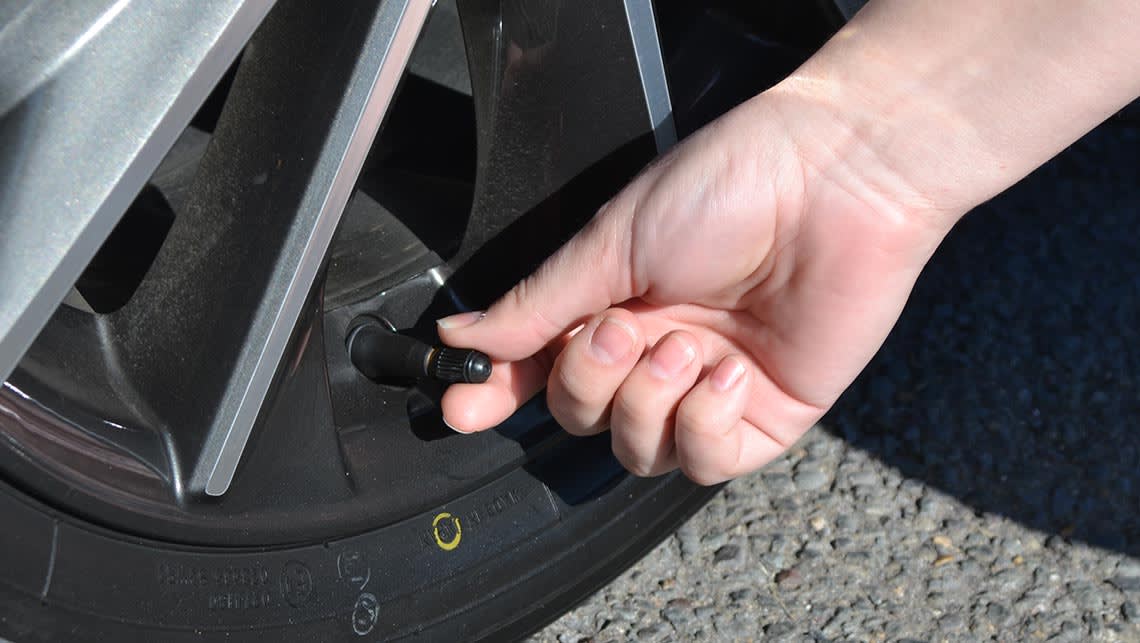
Correct pressure is a very relative concept. For example, a tire manufacturer recommends a pressure of 2.3 atmospheres, arguing that lower pressure increases tire wear. However, such advice is relevant for European roads, but for our potholes and bumps, such a high tire pressure can result in the loss of dental crowns - it will shake incredibly. This is not to mention the suffering of the car's suspension. So our drivers have to find compromises between tire wear and the condition of the car as a whole, and underinflated wheels are one of those solutions.
Rate this article:
(14 votes, average: 4.6 out of 5)
Share with friends!
Adblock
detector
Vladimir Gavrilov
Estimated reading time: 3 minutes
1971
Category: Auto Maintenance
The design of modern tires has changed. They have strong sidewalls designed to maintain stability during maneuvering. If pressure begins to drop in such wheels, then they do not deform too much, and it is almost impossible to determine “by eye” when pumping is required. A pressure gauge usually comes to the rescue, but what if it is not at hand?
They have strong sidewalls designed to maintain stability during maneuvering. If pressure begins to drop in such wheels, then they do not deform too much, and it is almost impossible to determine “by eye” when pumping is required. A pressure gauge usually comes to the rescue, but what if it is not at hand?
Many vehicles now have electronic systems that detect tire pressure differences using ABS. They work according to indirect data based on electromagnetic sensors in the hubs and register a pressure drop of about 1 atm. If the pressure in one of the wheels has decreased, then it sags, which means that due to the reduction in diameter, its rotation speed increases. Sensors pick up the difference in rotational speed and the electronic unit issues a warning in the form of a yellow lamp. Next, the driver is required to find which of the four tires has a puncture.
This can be done by tapping.
The stiffness of the sidewall and the sound of the impact will tell you which wheel needs pumping. It is necessary to beat with a fist in a glove with the application of force. Usually, when hitting an inflated tire, the hand feels a strong elastic response, as if hitting a wooden table.
It is necessary to beat with a fist in a glove with the application of force. Usually, when hitting an inflated tire, the hand feels a strong elastic response, as if hitting a wooden table.
However, if the pressure in the tire is less than one and a half atmospheres, then the blow becomes deaf and soft, and the rubber springs more actively. The sidewall flexes, and the driver can feel its compliance. The pressure difference between the four wheels is best recognized by blows.
When hitting, listen to the sound as well. If all tires ring the same, then you can go. But if at least one tire makes a dull sound on impact, then you should pay more attention to it.
Insufficient tire pressure affects the vehicle's coast. Any driver knows how far their car can roll at neutral speed. If the vehicle slows down more than usual on familiar straights, then it is possible that one or more wheels are not inflated as they should be.
Normally, a reduced coastdown is accompanied by a slight side pull of the machine, especially when one of the front wheels is flat. The car squats on a flat tire and forces the suspension to steer a bit.
The car squats on a flat tire and forces the suspension to steer a bit.
As soon as the driver experiences this effect, it's time to look for the nearest gas station with a tire inflation system. In extreme cases, in a store at a gas station, you can buy a portable compressor along with a pressure gauge and inflate tires.
According to the standards, the pressure difference in tires can vary within 0.2-0.3 atm., But not higher. With a puncture from a nail overnight, the pressure drops by about 0.8 atm. and more, which is fraught with a decrease in controllability. Tire sag in this case is already noticeable, but not every driver can feel the difference, especially when the car is parked in the snow.
If you set off on an uninflated tire, a number of troubles can occur. The driver can drive on a damaged tire for a long time until the pressure in the wheel reaches 1.0 atm. Then the car will pull to the side. However, many drivers mistake this for the effect of the natural slope of the road and continue driving.